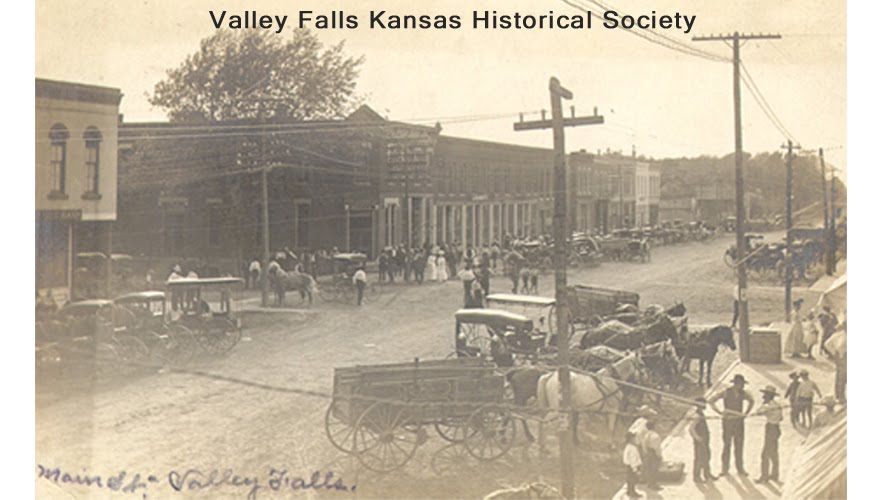December 28, 2010
Window display honors Valley Falls' Christmas birthday
December 21, 2010
Happy Birthday Valley Falls!
came running and in a minute Grasshopper Falls was discovered.
Traditionally, the story is repeated in December as "A Happy Birthday
Grasshopper Falls (Valley Falls)" greeting.
Christmas Day, 1854
On the morning of Saturday, December 23, 1854, four men — James
Frazier, Robert Riddle, Andrew J. Whitney, and Hozea B. Jolly — set
out on foot from their camp on the west side of the Grasshopper River
(now the Delaware). After traveling north about three or four miles,
they crossed the present site of Valley Falls, at the corner of
Sycamore and Sarah streets. A short distance farther up, they crossed
the Grasshopper River and wandered up to about the mouth of Coal Creek
before they started their return trip. A short distance above the
present town site, at the mouth of Cedar Creek, they found an Indian
village and tried to make them understand that the object of their
search was a waterfall for a mill site, but did not get any
intelligible directions. Continuing their return trip, they reached
the point where they had crossed the river. Here James Frazier
wandered down a trail along the river hoping to find a fjord. While
still in the hazel brush, he heard water running over the rocks, and
yelled, "ten foot falls!" (really only about three feet high), at the
top of his voice. The others came running and in a minute more,
Grasshopper Falls (Valley Falls) was discovered. They returned to the
high prairie and moved their camp up to this point on the 24th, and
drove stakes for their claim on Monday, December 25th, Christmas Day,
then commenced the erection of a cabin. Thus Christmas Day, which has
so many meanings for everyone, has a very special meaning for the
people of Valley Falls.
— Researched by late historian Arthur Strawn and printed in The
Vindicator Dec. 26, 1963.
The Valley Falls Historical Society Museum will be closed Dec. 25 and
Jan. 1. Winter operation hours will be announced later, reports Betty
Jane Wilson, historical society president.
December 15, 2010
Recollections of Mr. Piazzek
"We can't eat their flour" claimed Joe Piazzek's customers referring to the Oak Hill Flour Mill "about 60 miles below us and built at an expense of $13,000 for machinery alone" wrote Mr. Piazzek, continuing to relate incidents in his active career.
